TweetBot
DADA, MERZ, Gustav Metzger
some short “bios”:
DADA
DADA, the avant-garde art movement that emerged during the First World War, has its roots firmly planted in the bustling city of Zurich, particularly in the vibrant and eclectic Spiegelgasse (mirror gap). This unassuming street played a pivotal role in the formation and development of DADA, serving as a hotbed of an artistic revolution and intellectual exchange.
As the war ravaged Europe, a group of artists, writers, and performers found refuge in neutral Switzerland, specifically in Zurich. Drawn together by their shared disillusionment with society and the horrors of war, they sought solace and creative expression in the cafes and meeting places that dotted the city, with the Spiegelgasse becoming a focal point.
At number 1 Spiegelgasse, Hugo Ball, a German writer, and Emmy Hennings, a cabaret performer, established the now-famous Cabaret Voltaire in 1916. This intimate establishment quickly became a haven for artistic experimentation and intellectual discourse. Here, artists from various disciplines, including Tristan Tzara, Marcel Janco, and Hans Arp, congregated, challenging traditional artistic norms and seeking to redefine the boundaries of creative expression.
The Spiegelgasse, with its narrow and winding streets, served as an incubator for the radical ideas. One would come to define DADA. Located at Spiegelgasse 14, Lenin’s place of refuge, it served as the incubator for another social, cultural revolution of a different kind. In this dynamic environment, the DADAists rejected established artistic conventions and sought to disrupt the prevailing cultural and social order. They embraced absurdity, randomness, and nonsensicality, staging provocative performances and creating unconventional artworks that defied traditional interpretation.
DADA drew from the chaos of the times, using it as fuel to dismantle conventional thinking and challenge societal norms.
The movement’s name itself, “DADA,” is said to have been chosen randomly by stabbing a knife into a dictionary, and it is fitting that the birthplace of such a movement would be a street that embodied the spirit of rebellion, spontaneity, and chance.
While DADA eventually spread to other cities across Europe, the Spiegelgasse in Zurich remains an iconic symbol of its origins. Today, the street continues to pay homage to its DADAist heritage, with galleries, museums, and cultural institutions dedicated to preserving and celebrating the movement’s radical spirit.
MERZ and Kurt Schwitters
MERZ is a nonsense term/word created by Kurt Schwitters to encapsulate his art and philosophy. The word MERZ originated from a fragment of found text from an advertisement for the German word “ComMERZ- und Disconto-Bank” Hamburg (today Commerzbank). Other source ascribe this simply to the word Kommerz. Schwitters adopted the term to represent his artistic practice and philosophy, which aimed to challenge and subvert traditional artistic norms and embrace the idea of total artistic freedom. By using the nonsensical term MERZ, Schwitters sought to break away from conventional definitions and create a new artistic language that encompassed all aspects of life and blurred the boundaries between art and everyday existence.
The concept of MERZ involved creating collages and incorporating found objects to make aesthetic sense of the fragmented world. Schwitters believed that art should not be confined to traditional mediums but should encompass all aspects of life. He used discarded materials, such as scraps of paper, fabric, and everyday objects, to create his artworks.
Schwitters viewed MERZ as a form of rebellion against established artistic conventions. He saw it as a way to challenge the distinctions between art and life, high and low culture, and the traditional boundaries of artistic disciplines. MERZ artworks often featured abstract compositions, geometric forms, and juxtapositions of different found materials, trash and fragments to create visually dynamic and thought-provoking pieces.
Beyond visual art, Schwitters also applied the MERZ philosophy to other creative endeavours, including poetry, “Die Urlaut Sonate”, sound, typography, graphic design, and installation art. He published a periodical called MERZ, which served as a platform to share his ideas and showcase the work of other artists.
MERZ art had a significant influence on the development DADAism after the 1st WW vice versa and the development of modern art. Schwitters’ approach to art-making challenged conventional notions and expanded the possibilities of artistic expression. Today, the term MERZ is primarily associated with Kurt Schwitters and his artistic legacy, representing a unique and innovative artistic practice that continues to inspire and resonate with contemporary artists.
The concept of MERZ involved creating collages and incorporating found objects to make aesthetic sense of the fragmented world. Schwitters believed that art should not be confined to traditional mediums but should encompass all aspects of life. He used discarded materials, such as scraps of paper, fabric, and everyday objects, to create his artworks.
Schwitters viewed MERZ as a form of rebellion against established artistic conventions. He saw it as a way to challenge the distinctions between art and life, high and low culture, and the traditional boundaries of artistic disciplines. MERZ artworks often featured abstract compositions, geometric forms, and juxtapositions of different materials to create visually dynamic and thought-provoking pieces.
Beyond visual art, Schwitters also applied the MERZ philosophy to other creative endeavours, including poetry and sound, “Die Urlaut Sonate”, typography, graphic design, and installation art. He published a periodical called MERZ, which served as a platform to share his ideas and showcase the work of other artists.
The MERZ movement had a significant influence on DADAism and the development of modern art. Schwitters’ approach to art-making challenged conventional notions and expanded the possibilities of artistic expression. Today, the term MERZ is primarily associated with Kurt Schwitters and his artistic legacy, representing a unique and innovative artistic practice that continues to inspire and resonate with contemporary artists.
Gustav Metzger
Gustav Metzger (1926-2017) was a renowned artist, political activist, and a leading figure in the development of Auto-Destructive Art and the wider art movement known as Destruction Art. Born in Nuremberg, Germany, Metzger’s life and work were profoundly shaped by his experiences as a Jewish refugee fleeing Nazi persecution.
After settling in Britain in 1939, Metzger studied art and began his artistic career in the 1950s. He was deeply influenced by his experiences of witnessing the destructive forces of war and the Holocaust. These experiences fuelled his belief that art should serve as a catalyst for social and political change.
Metzger is best known for his concept of Auto-Destructive Art, which he introduced in the late 1950s. This ground breaking approach involved the creation of artworks that were designed to deteriorate, decay, or be destroyed. Through these acts of destruction, Metzger aimed to confront the viewer with the impermanence and fragility of human existence and to critique the destructive tendencies of modern society.
Metzger’s artistic practice extended beyond the confines of traditional art spaces. He actively engaged with political activism and participated in protests against nuclear weapons, environmental degradation, and social injustices. His activism and art were deeply intertwined, with each informing and reinforcing the other.
Throughout his career, Metzger exhibited his work internationally, gaining recognition for his thought-provoking installations, performances, and manifestos. His influence extended to subsequent generations of artists, who were inspired by his radical approach to art-making and his commitment to using art as a tool for social transformation.
Gustav Metzger’s contributions to the art world and his unwavering commitment to using art as a means of activism and social change have left a lasting impact. His work continues to be studied and celebrated, reminding us of the power of art to provoke critical thinking, challenge societal norms, and advocate for a more just and compassionate world.
summary
DADA emerged during the First World War, a time of immense destruction and chaos. The artists of DADA, seeking solace and creative expression, gathered in Zurich’s Spiegelgasse. The war’s ravages and their shared disillusionment with society shaped their artistic vision. DADA sought to dismantle conventional thinking and challenge societal norms, embracing absurdity and randomness. The movement drew from the chaos of the times as a fuel for their artistic revolution.
Kurt Schwitters and his concept of MERZ also arose in the aftermath of the war. The term MERZ originated from an advertisement for a German bank, a reminder of the commercialization and societal fragmentation that Schwitters sought to confront. His art aimed to make sense of the fragmented world by creating collages and incorporating found objects. The concept of MERZ rebelled against established artistic conventions, blurring the boundaries between art and life. Schwitters’ artistic philosophy, born from the aftermath of war, left a significant impact on the development of DADA and modern art.
Gustav Metzger’s life and work were profoundly shaped by his experiences as a Jewish refugee fleeing Nazi persecution during the war. Witnessing the destructive forces of war and the Holocaust fuelled his belief that art should be a catalyst for social and political change. Metzger’s concept of Auto-Destructive Art, introduced in the 1950s, aimed to confront viewers with the impermanence and fragility of human existence. His artistic practice and political activism were intertwined, as he actively engaged in protests against nuclear weapons and social injustices. Metzger’s commitment to using art as a means of activism and social change was a direct response to the devastating impact of war.
The critique of war and society
These three narratives reflect the profound influence of war on artistic movements and individual artists. The devastation and disillusionment experienced during these turbulent times shaped their perspectives and drove them to challenge established norms, seeking to create art that could provoke critical thinking, challenge societal structures, and advocate for a more just and compassionate world.
the war of the worlds
This is not about Edgar Alan Poe but the 2 world wars, the fall of empires, and the ongoing indirect self-extinguishing of society/ties. The other 1st World problems.
How we not met in the Spiegelgasse. (mirror gap) The revolution of DADA.
MERZbau and destruction
Destruction played a significant role in shaping the art of Kurt Schwitters, particularly during and after World War I. Schwitters’ artistic practice was heavily influenced by the chaos and destruction caused by the war, as well as his personal experiences during this tumultuous period. Additionally, Schwitters’s innovative use of recycled materials further demonstrated his response to destruction and its impact on his art.
During World War I, Schwitters witnessed firsthand the devastating effects of war on society and the environment. The war left cities in ruins, and this imagery of destruction profoundly affected Schwitters. In response, he began incorporating elements of debris, found objects, and discarded materials into his artworks. He believed that by using these materials, he could transform destruction into creation and find beauty in the midst of chaos.
Schwitters is best known for his development of the artistic movement called “Merz,” which aimed to challenge traditional artistic norms and embrace the idea of total artistic freedom. The term “Merz” originated from a fragment of found text from an advertisement for the German word “Commerz- und Disconto-Bank” (today Commerzbank), and Schwitters adopted the term to represent his artistic philosophy.
Central to Merz art was the technique of collage, where Schwitters would assemble various materials, including paper, cardboard, fabric, and even tram tickets, into intricate and visually dynamic compositions. These collages often incorporated elements of destruction and chaos, reflecting the fragmented nature of the world after the war. Through this process, Schwitters sought to make sense of the disordered and fractured reality by creating something new and harmonious out of the remnants of destruction.
In addition to his use of recycled materials, Schwitters explored the concept of “Merzbaus” or “Merz buildings.” These were ambitious architectural installations that he began constructing in his home. The Merzbaus were large-scale, immersive artworks that incorporated found objects and materials from everyday life. However, as World War II approached, the last Merzbaus was destroyed by bombing in 1943, illustrating the devastating impact of war on Schwitters’ artistic endeavours.
Despite the destruction and challenges he faced, Schwitters remained resilient and continued to create art until his death. His innovative use of recycled materials and his exploration of the theme of destruction in his art were ground-breaking and highly influential for subsequent generations of artists.
In summary, destruction, both as a consequence of war and as a theme in his art, deeply affected Kurt Schwitters’ creative process. He responded to the chaos and devastation of the world by incorporating debris and found materials into his artworks, transforming destruction into an expression of creativity and renewal. Schwitters’ ability to find beauty and meaning amidst destruction remains a testament to his enduring artistic legacy.
destruction as a vital concept of/in art
Destruction was a vital and central concept in the art of Gustav Metzger, particularly in the movement he pioneered known as “Auto-Destructive Art.” This innovative and radical approach to art emerged in the late 1950s and became a significant part of Metzger’s artistic practice and philosophy.
Auto-Destructive Art was a direct response to the experiences of war and the destructive forces of the 20th century, including the horrors of the Holocaust and the devastating impact of nuclear weapons. Metzger believed that art should not only reflect the turbulent and precarious nature of the modern world but also actively confront and challenge society’s destructive tendencies.
In Auto-Destructive Art, the artworks themselves were intentionally designed to deteriorate, decay, or be destroyed over time or during a performance. The process of destruction was a critical aspect of the artwork and the message the artist wanted to convey. By embracing destruction, Metzger aimed to highlight the transient nature of existence, the impermanence of human creations, and the potential for destruction in modern society.
The act of destruction in Metzger’s art was not merely an end in itself but a means of provoking a response and encouraging critical reflection. It served as a powerful statement against consumerism, materialism, and the obsession with permanence in art. Metzger saw destruction as a way to break free from the confines of traditional artistic practices and challenge the notion of art as a static, commercialized commodity.
Auto-Destructive Art also encompassed performances and public demonstrations where Metzger would create artworks meant to be destroyed or allowed to decay in front of an audience. These performances were often accompanied by manifestos and statements that articulated his philosophical and political ideas about art and society.
Through Auto-Destructive Art, Metzger sought to bring attention to pressing social and environmental issues, such as the threat of nuclear war, environmental degradation, and the consequences of unchecked technological progress. He believed that art could be a powerful tool for activism and social change, encouraging people to question the status quo and envision a more responsible and compassionate world.
Gustav Metzger’s Auto-Destructive Art had a profound impact on the art world and influenced subsequent generations of artists who embraced the idea of art as a form of critical engagement with the world. His work continues to be celebrated for its innovative approach and its challenge to established artistic conventions, making him a pioneering figure in the realm of conceptual and socially engaged art.
comparison
Kurt Schwitters and Gustav Metzger were two influential artists who incorporated the concept of destruction into their artistic practices, but they approached it from different perspectives and with distinct intentions. Let’s compare the role of destruction in the arts and lives of Kurt Schwitters and Gustav Metzger:
-
Response to World Wars:
- Kurt Schwitters lived during World War I and witnessed the destruction caused by the war. This experience deeply impacted his art, leading him to incorporate elements of destruction and chaos into his work. He used found objects and debris to create collages and Merzbaus, aiming to find beauty in the midst of destruction and to challenge traditional artistic norms.
- Born in 1926, Gustav Metzger experienced the devastating effects of World War II, including the Holocaust. His art was profoundly shaped by these experiences, and he developed the concept of Auto-Destructive Art as a response to the destructive tendencies of modern society. Metzger’s art involved creating works that were designed to decay, deteriorate, or be destroyed, reflecting his critique of the destructive forces in the world.
-
Artistic Intent:
- For Schwitters, the use of destruction in his art was a means of transformation and renewal. He sought to create something new and harmonious out of the remnants of destruction, finding aesthetic value in the discarded and fragmented materials he used.
- Gustav Metzger’s approach to destruction in art was more provocative and politically charged. His Auto-Destructive Art was a form of activism and a way to confront the viewer with the impermanence and fragility of human existence. He used destruction as a tool to critique war, consumerism, and environmental degradation.
-
Use of Materials:
- Kurt Schwitters became well known for his use of recycled materials and found objects in his artworks. He embraced everyday materials such as paper, cardboard, and tram tickets, transforming them into collages and assemblages that embodied the chaos and diversity of modern life.
- The Auto-Destructive Art involved the deliberate use of materials that were designed to decay or be destroyed, highlighting the transient nature of existence. Metzger used materials that could disintegrate over time, such as acid on nylon, to create his works.
-
Legacy:
- Schwitters’ influence on the art world, particularly through the Merz movement, remains significant. His innovative use of materials and his exploration of destruction as a creative force inspired generations of artists and contributed to the development of modern art.
- Gustav Metzger: Metzger’s impact on the art world was also substantial, especially in the realm of performance art and conceptual art. His politically engaged approach to art and his use of destruction as a critical tool left a lasting mark on contemporary art practices.
While both Kurt Schwitters and Gustav Metzger integrated the concept of destruction into their art, they did so with different motivations and artistic approaches. Schwitters sought to transform and find beauty in destruction, while Metzger used destruction as a means of activism and critique. Nevertheless, both artists’ engagements with destruction in their work have left a lasting impact on the art world and continue to be studied and celebrated for their innovative and thought-provoking contributions.
Computer Art Society involvement
Gustav Metzger’s impact on computer art can be traced to his pioneering involvement in the art and technology movement, particularly his collaboration with the Computer Arts Society (CAS) magazine “PAGE” editor, Gustav Metzger, and the influential cooperation he had with the iconic rock band Pink Floyd. Let’s explore these connections:
-
Art and Technology Movement: Gustav Metzger was a key figure in the art and technology movement that emerged in the 1960s. This movement explored the intersection of art and technology, incorporating new and emerging technologies into artistic practices. Metzger was at the forefront of using technology as a means of artistic expression, and his experimentation with auto-destructive art extended to incorporating technology as a tool for creation and expression.
-
CAS “PAGE” Editor: Gustav Metzger was the first editor of the Computer Arts Society (CAS) magazine “PAGE” and he played a significant role in promoting computer art and its integration into the art world. Through this collaboration, Metzger likely helped expose computer-generated art to a wider audience, fostering the dialogue between artists, technologists, and the general public about the potential of computer-based creative practices, although he was in a techno-pessimist in general.
-
Cooperation with Pink Floyd: One of the most iconic moments where Gustav Metzger’s influence intersected with popular culture was through his cooperation with the legendary rock band Pink Floyd. Metzger’s auto-destructive art concept inspired Pink Floyd’s performance at the 14 Hour Technicolor Dream event in April 1967. During this performance, the band projected images of auto-destructive art created by Metzger onto themselves as they played. This collaboration brought Metzger’s ideas to a global audience and demonstrated the fusion of art, music, and technology.
Gustav Metzger’s involvement in computer art and his influence on Pink Floyd’s performance showcased the potential of technology in expanding artistic boundaries. His pioneering efforts in the art and technology movement and his collaborations with prominent cultural figures left a lasting impact on the development of computer art and its integration into mainstream culture. Today, his legacy continues to inspire artists who explore the creative possibilities of technology and its role in shaping contemporary artistic expressions.
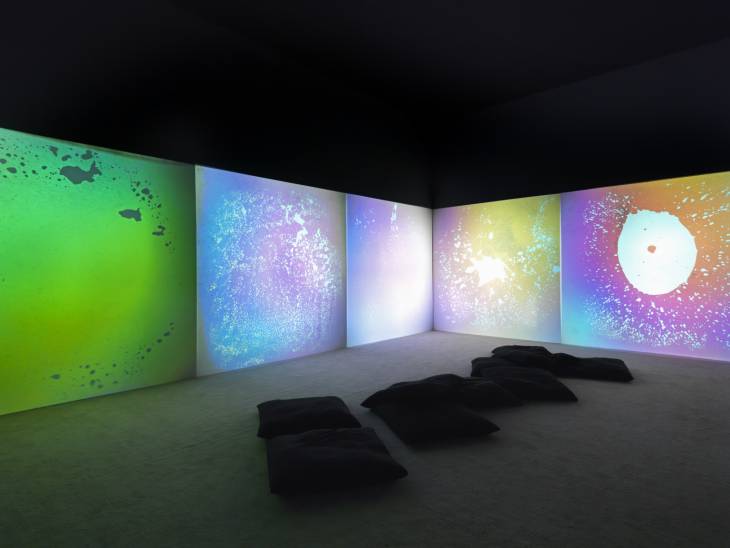
The Role Of The Social Network
While the “The Social Network”, a movie, refers usually to Facebook and it’s originator Marc Zuckerberg, here I took a look into myspace(first abandoned, now discontinued as a music platform), identy.ca(free twitter clone and extinct) and latest twitter and sincerely for a good period the platform of choice for social art bots, because of the quality and quantity of data it provided in cooperation with the inter-actions, it allowed.
So Twitter was the platform of choice.
To enable a piece of software, the program, a generative art bot to socially interact with people, it needs access to such a space, where IT can meet with people. Museums, galleries, conferences are such spaces in the real world, but a bot can not walk on the street - for now.
The concept of “The Social Network” acted/acts as an enabler for such meetings, experiments. It might help us to understand the realm of AI in a better way, tracing down the benefits, creating an awareness of the real risks, avoiding stupid choices, both, the implementation of AI and usage.
Gustav Metzger Inspired
The Gustav Metzger is/was a tweet based slide show generator.
The tweet is used as an number generator. numbers.push( tweet.charCodeAt(i) );
call the function nextNumber() will return an UTF-16 based char code number, anything between 0 and 1114111.
the graphic composition preforms:
paint a geometrical figure on 2(n) squared canvas sections,
colour and konkret figure are chosen by nextNumber() % colours.length|figures.length
rotate one of the squares, chosen by rotation = (nextNumber() % 4) * 0.5 * Math.PI // steps of 90°
step one to the left|right, redo the paint operation from above, until operations reaches length of tweet|numbers array
the sound will be generated by the numbers values to be specified
the length & chars of the name will return the basic setting
the profile images avatar and background will generate two palettes of colours. may be decomposed as initial textures.
| images of the first versions of TweetBot and related Twitter experiments |
lieschen mueller | ©2008-2016 |
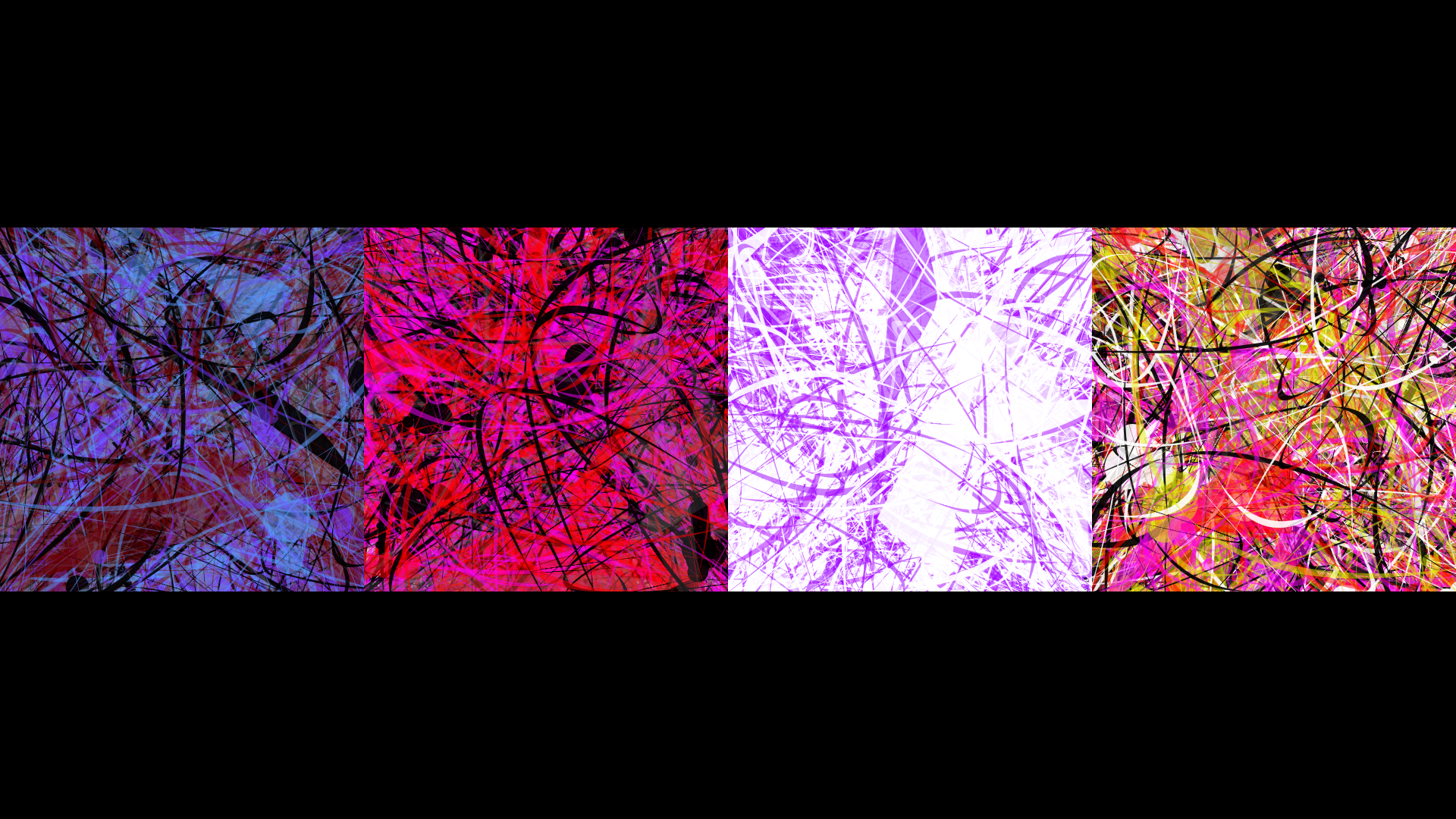 |
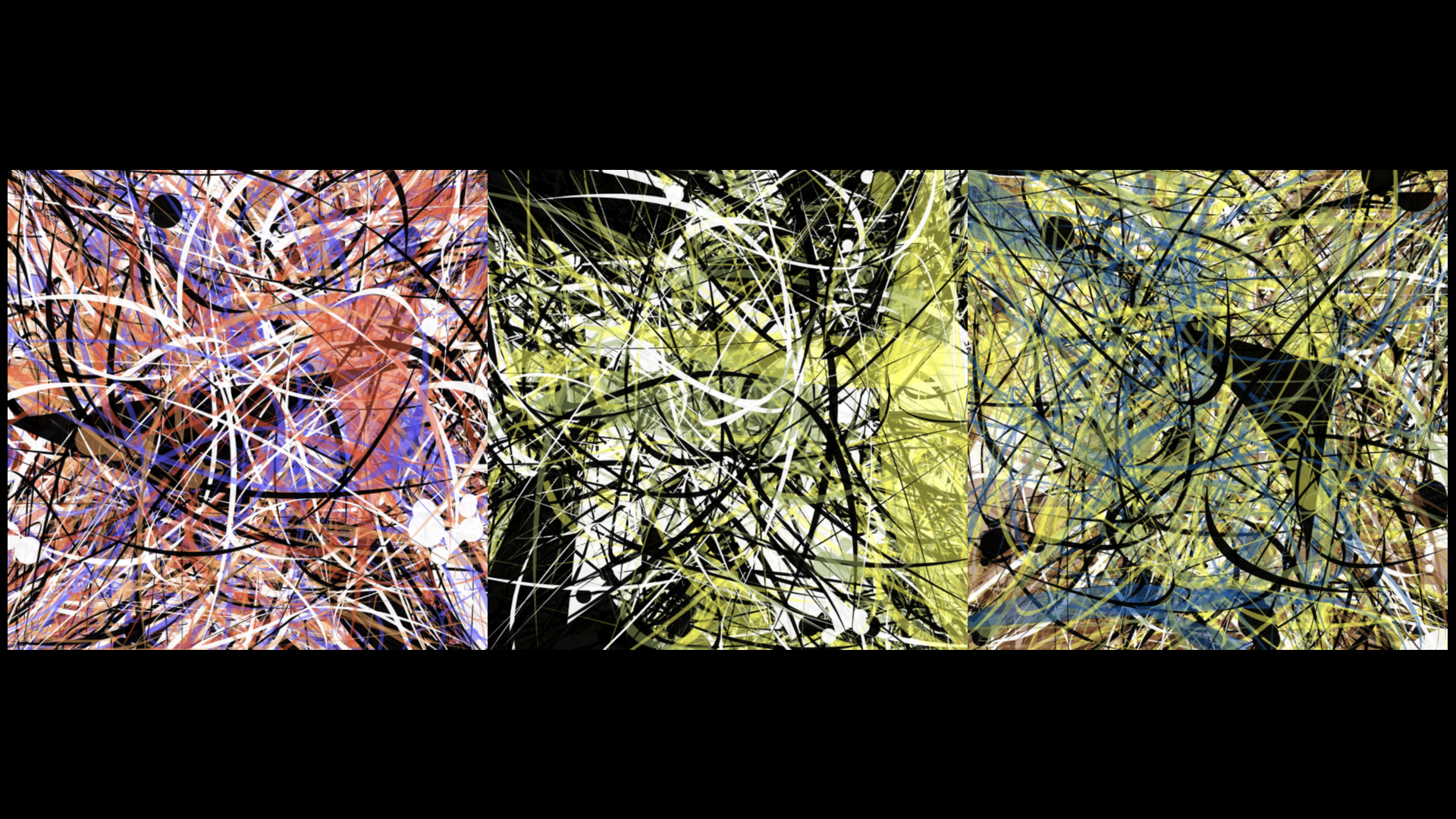 |
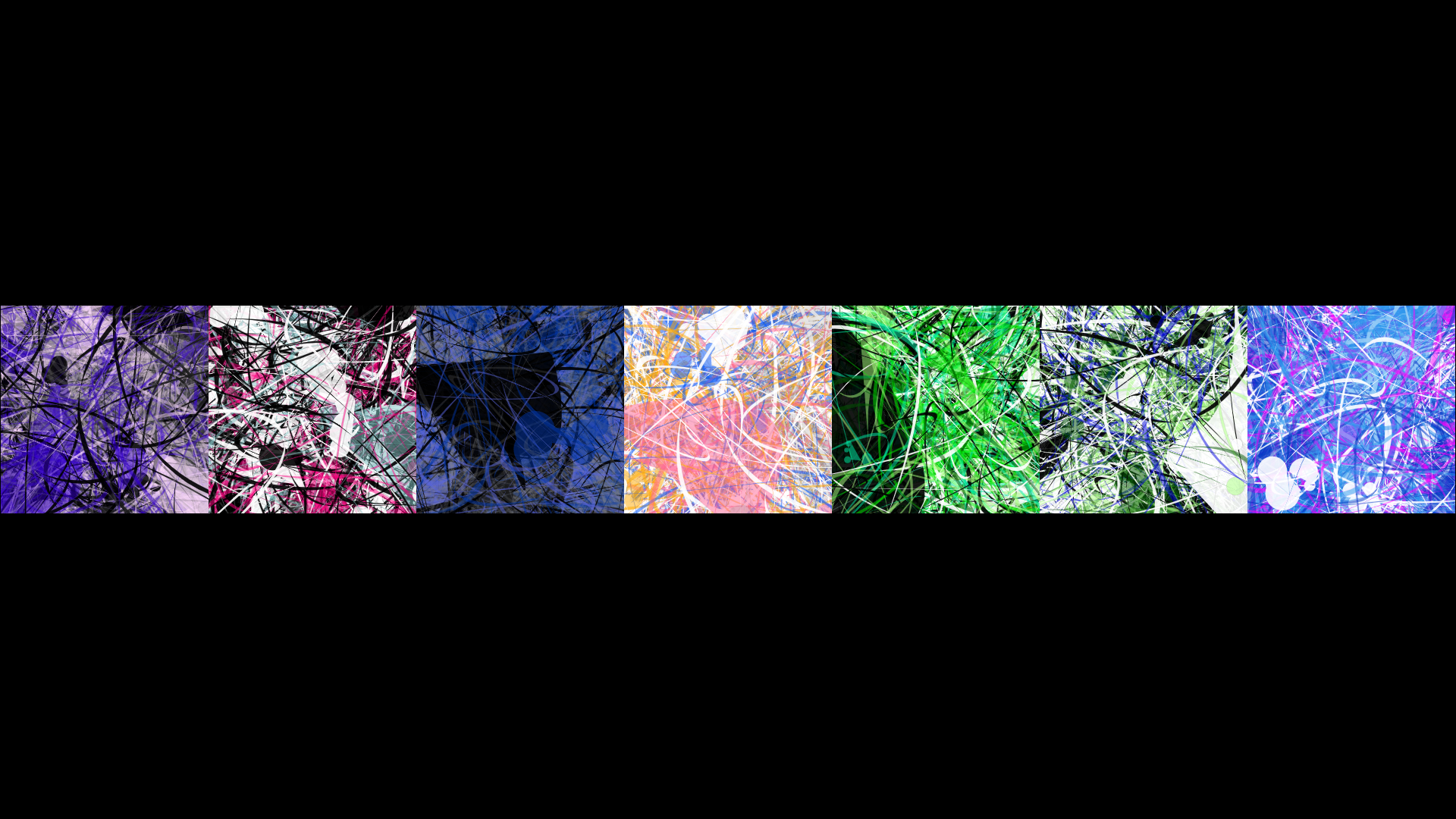 |
An Auto-destructive TweetBot
The number generator tweetRandom [nextNumber] in it’s simplest form relies solely on the given text and
- crawls to the end of the text.
- It also can iterate through the text over and over again.
- iterates through the text but for every round removes one char, with the position based on the last number.
- This causes a natural condition of death.
- Short to the end the bot may prompt for additional input:
cry out “feed me, feed me”
establishing and communicating the need of feed for survival
| the next iterations of TweetBot | lieschen mueller | ©2016-2022 |
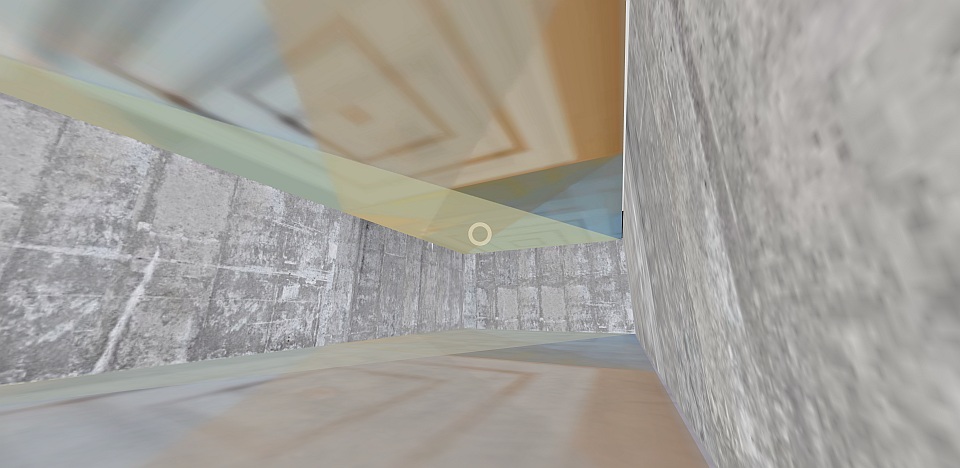 |
May 2017 still of an generated room - the ‘image’-textures are videos with sound | |
 |
 |
 |
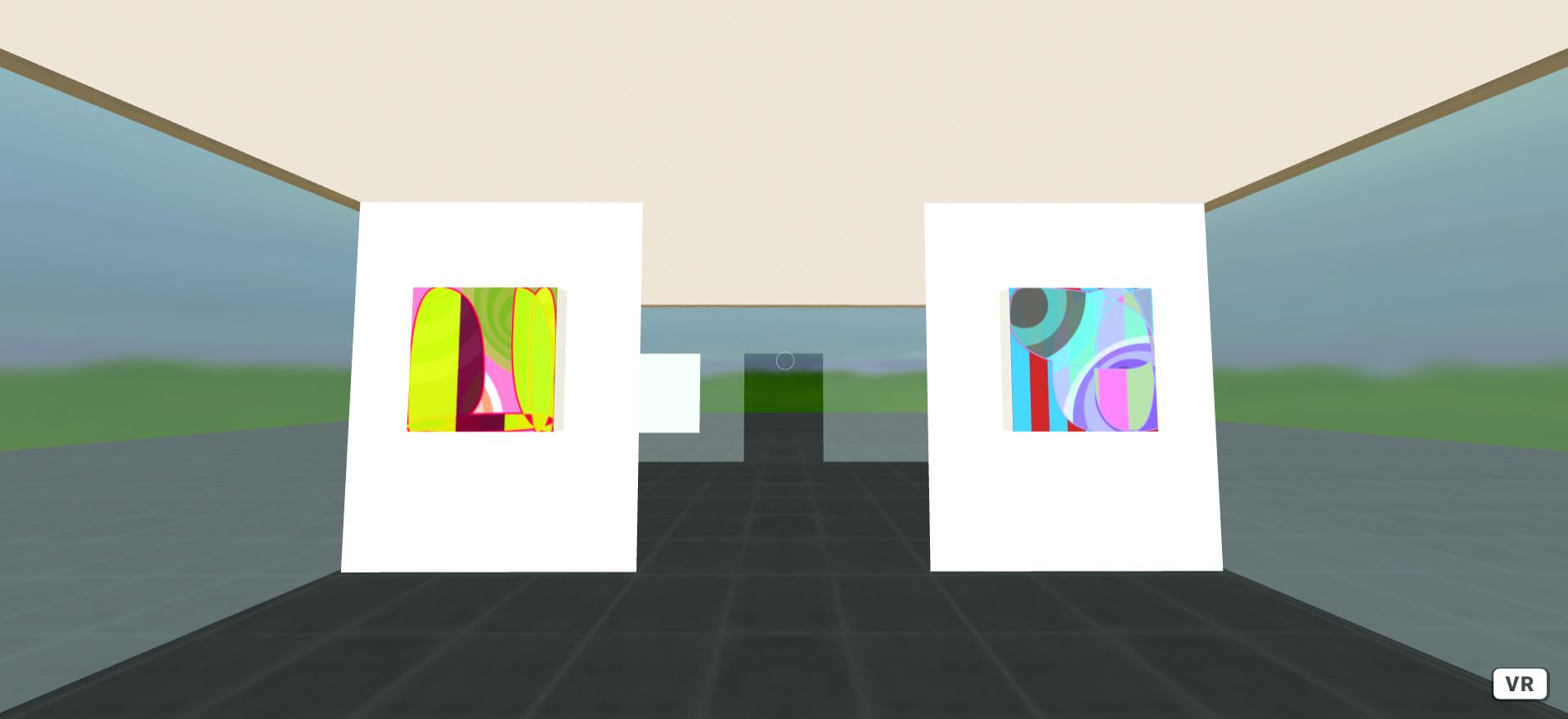 |
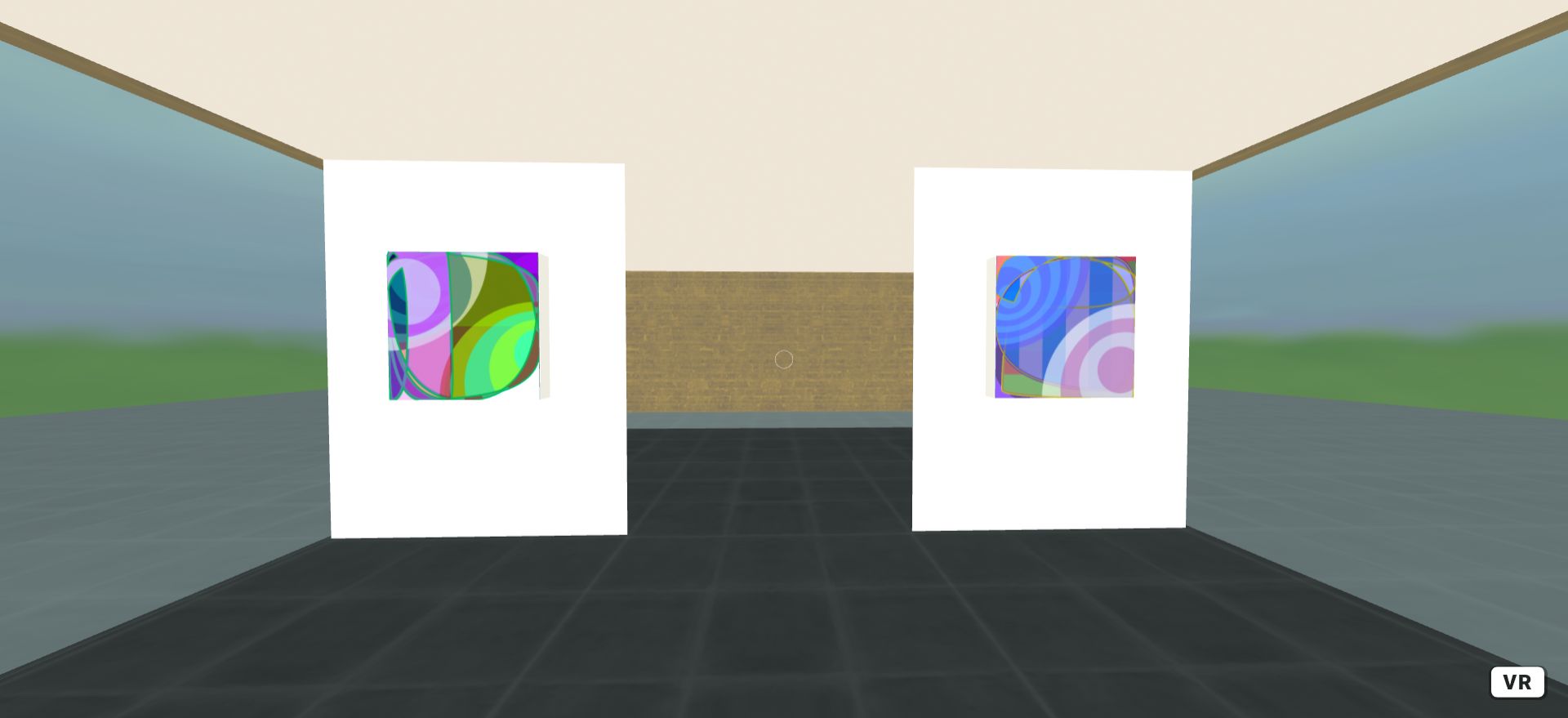 |
More complex tweetRandom implementations were fetching more data from the tweet.
- the id of the tweet
- the id of the author
- the authors screen-name, pre- and surname, location, short bio
which allows to build a longer living, finer modulation of the resulting numbers.
Instead of natural numbers tweetRandom provided float values between 0 and 1 like the JavaScript Math.random function.
| the third step of TweetBot not twitter related anymore |
lieschen mueller | ©2022-ongoing |
.png) |
.png) |
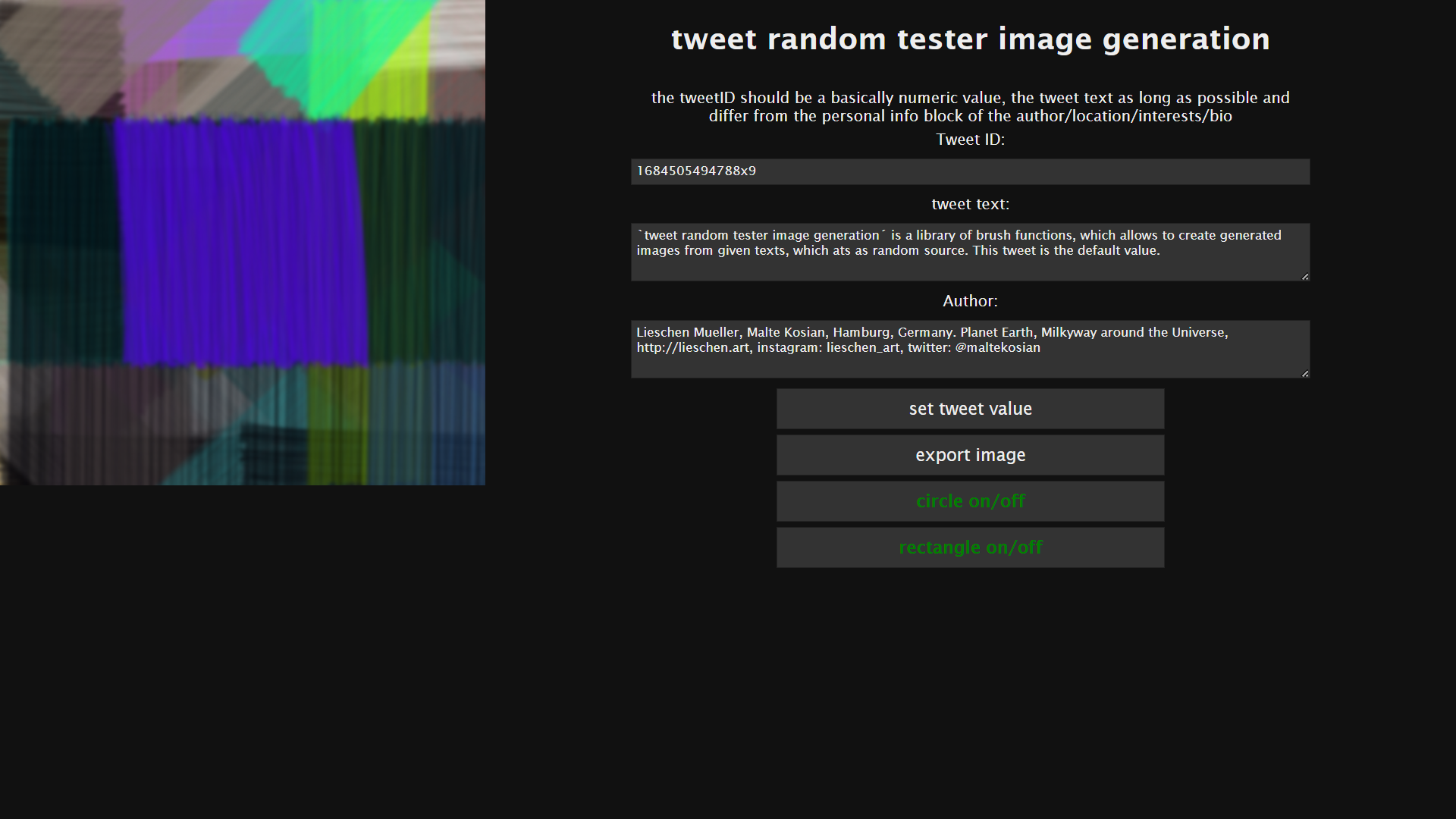 |
In the third step iteration of the software structural statistical text analysis is added to tweetRandom. The model is build on a three inputs prompt, ID, text, author’s values A grammatical assumption analysis model has been build and tested, but the quality of the results were to much randomly to rely on. This was quite a good lesson to build on later concepts.
The Total DADAMERZification
auto-destruction and meta-auto-destructive Abstract Identity model
- flat learning maps not large language models, deep learning
- rebuild the experience of language by creating random sets of grammar with a “minimum” dataset of words
- emphasis the conflict of noise (music), spoken language and shape in a 2d or 3d environment
The fourth iteration of the tweetRandom take the given prompts and all prior implementations and combines those in one model.
It also generates a DADAMERZ language based of the given tweet-text with randomly a chosen grammar.
The statistical analysis of the text allows to create the small set of words, approximately around 300 to 500 words.
The words might be abbreviations though, if spoken by a synthesis.
Speech synthesis will enable the TweetBot to talk and rap to the audience, a noise music generator provides the atmospheric impression,
while the 2d image-lib (a library of painting functions) provides the on going painting process.
The 3d environment is a simple cube or a polygonal “cylinder”. The paintings are happening on the walls of this space.
language as a social contract
art as a language
[the broken, opposing social contract]
the identification of individuals via Abstract Identity / Social Contract
Social contract or “The Social Contract” was an ideal idea developed by Rosseau. “The Social Contract” …
Social contracts are any real world implementation: constitutions, languages, behaviours, and tabus, etc. Generally speaking social contracts are such concepts one has born into and is mostly silently or unconsciously agreeing with by simply taken them for granted and using them. Sometimes we do consciously agree to them, like a membership of club, a contract to buy/rent a car. By saying agreeing even opposing such a social contract is an action of realising the existence of such social contract.
“Abstract Identity” refers here to the term as discussed by Hegel and Marx in the pure critique of Kant’s rather superficial - superstitious, if you read Marx and Hegel; they said the one but meant the other - idea of identity. It is here extended in such a way to implement a model of identity for an AI/generator too set in the limits of an artistic approach, specifically mine, crafting playful experiences. To give it a long run it should be able to act, inter- and re-act in the context of it’s abstraction of society, the social distance and critique.
A bot with the need of survival and identification through art, music, language in a space of communication
all bots must die.
The Gustav Metzger TweetBot has been banned from twitter because of
- twitter’s need of survival, and the consequential commercialization
- Elon Musk does not really care about the freedom of speech and silenced all ART-Bots
In further iteration the GM™ TweetBot will establish an on going communication with a primitive chat / chat bot as an addition to the other methods. It might or will use it’s own language. It will also change and iterate over it’s personality aka identity by death and resurrection/rebirth. This implies an an-/successor model.
so must society
Navigation In the Age of Digital Production A 3d library generator Abstract Identity